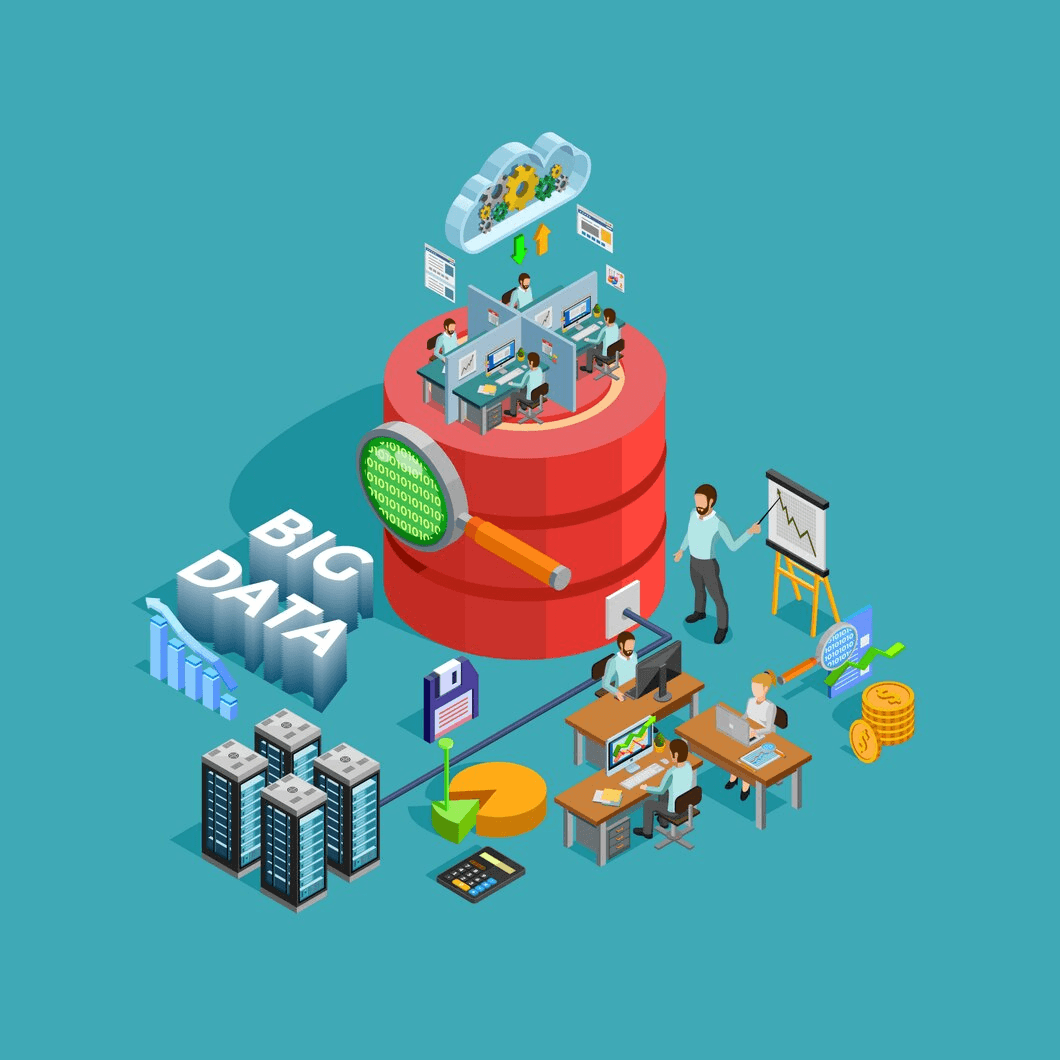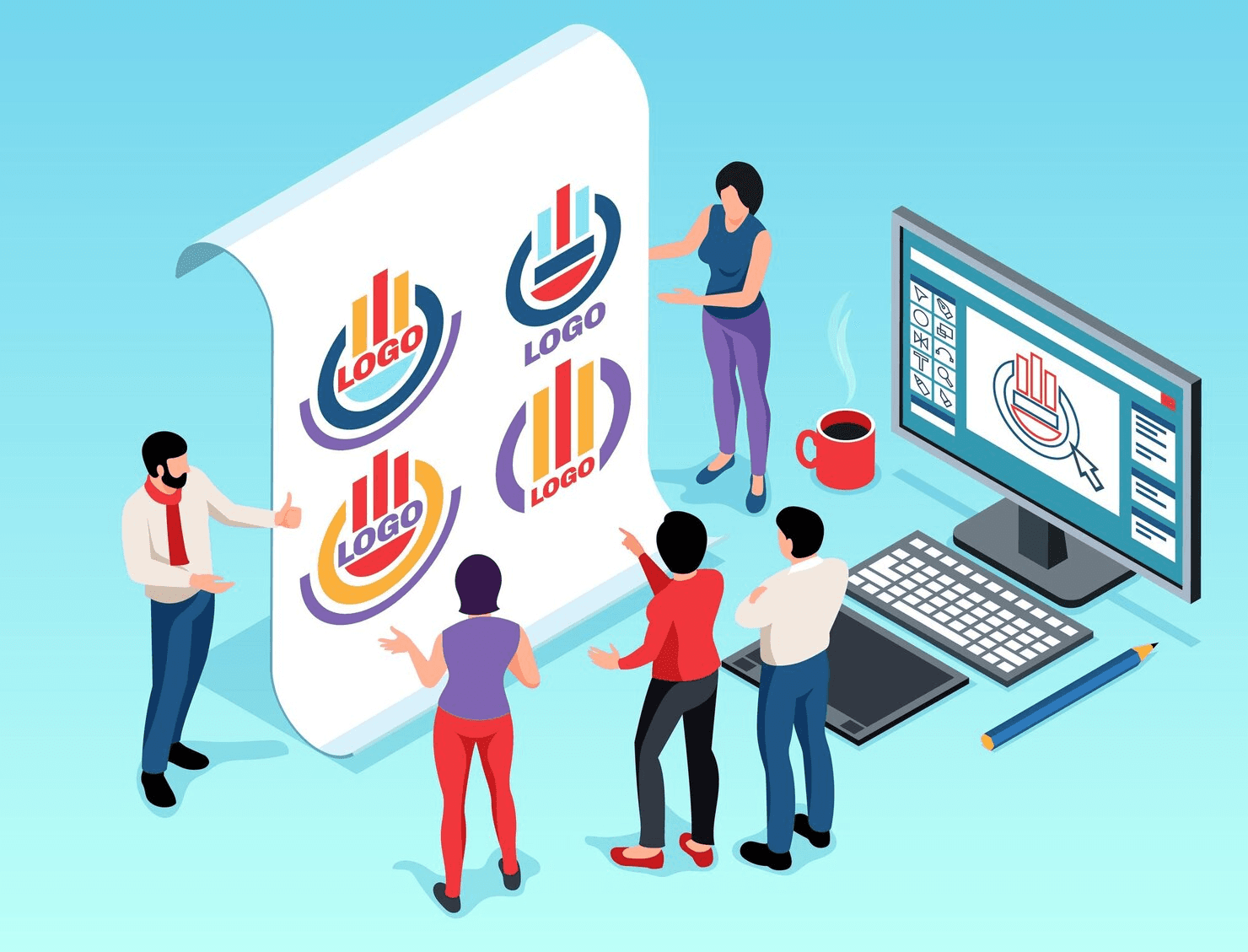Freelancers enjoy the flexibility of setting their schedules, yet this freedom often comes with the difficulty of managing multiple projects and deadlines without the structure of a traditional workplace.
The pressure to meet client demands and juggle various tasks can quickly become overwhelming. In such an environment, it’s easy to see how burnout might creep in. Many are left wondering how to stay on top of their work while avoiding the exhaustion that often follows.
What if there was a way to balance the workload efficiently, without compromising on quality or well-being? How can the demands of freelancing be met while keeping burnout at bay?
Effective Workload Distribution with Project Management Tools
For freelancers, managing an extensive and often unpredictable workload is one of the most significant challenges. Project management software provides a structured way to allocate time and resources to multiple projects without overwhelming oneself.
By tracking deadlines, assignments, and progress in real-time, these tools offer a visual representation of the workload, which enables freelancers to balance tasks effectively. With clear distinctions between projects, freelancers avoid the risk of focusing too much on one task at the expense of others.
The ability to prioritize tasks based on urgency and importance is one of the most powerful features offered by office management software. Freelancers can categorize tasks, set deadlines, and visualize their workload to ensure they are not overloaded.
By breaking down large tasks into smaller, manageable steps, the software supports the freelancer in taking a strategic approach to work. This structured approach eliminates chaos, ensuring a more balanced work-life dynamic and reducing stress.
Key Features to Organize Tasks and Avoid Overwhelm
Freelancers often struggle with organizing their tasks and keeping track of their progress. Office management software addresses this issue by providing a centralized platform for all tasks, making it easier to stay on top of every project.
Features such as task lists, checkboxes, deadlines, and reminders help freelancers keep their tasks organized and visible. With these tools, freelancers are no longer left to manually track deadlines or juggle between various projects, which often results in mental fatigue.
Task management tools within project management software offer more than simple to-do lists; they provide a system of organization that reduces cognitive load. Freelancers can automate reminders and set specific deadlines, which prevents tasks from slipping through the cracks.
The ability to visually track progress allows freelancers to feel accomplished as they check off tasks and meet deadlines. This level of organization helps avoid the anxiety of forgetting something crucial and ensures that the workload stays manageable, not overwhelming.
Managing Multiple Projects Simultaneously
Freelancers are often required to juggle several clients and projects at once, which can create a sense of pressure if not managed properly. Office management software enables freelancers to keep track of various projects simultaneously without losing control.
By having a central dashboard that provides a clear overview of all active projects, freelancers can see which tasks need immediate attention and which can be delayed. This feature prevents the feeling of chaos that typically accompanies handling multiple projects and keeps the workflow smooth.
Managing multiple projects doesn’t have to lead to stress. With the right project management tools, freelancers can maintain an organized approach to their work. Features like project tags, task categorization, and deadline tracking ensure that all projects stay on schedule.
The ability to switch between projects easily without losing focus allows freelancers to divide their energy efficiently, reducing the chances of burnout from trying to handle too much at once.
Prioritizing Tasks with Project Management Software
When juggling multiple tasks, prioritization is crucial to avoid burnout. Project management software provides the tools needed to prioritize tasks based on urgency, importance, and deadlines.
By categorizing tasks with different priority levels, freelancers can allocate their time and energy where it’s most needed. This structured approach helps freelancers stay focused on high-priority tasks, reducing the chance of falling behind on critical deliverables.
Effective task prioritization with project management software is not just about organizing tasks—it’s about understanding the bigger picture. Freelancers can break large projects into smaller, manageable tasks and assign deadlines, ensuring that important deadlines are met without rushing through tasks.
This methodical approach ensures that tasks are completed systematically, reducing stress and the possibility of neglecting essential tasks in the rush to complete everything.
Improving Focus and Reducing Distractions
In the world of freelancing, distractions are inevitable. Whether it’s constant emails, phone calls, or the temptation of social media, freelancers face numerous interruptions throughout the day. Office management software offers a solution by centralizing all task management in one place.
By reducing the need to switch between multiple apps or platforms, freelancers can stay focused on what’s important, decreasing the likelihood of distractions derailing their productivity.
Time management features within project management tools also help reduce distractions by encouraging freelancers to work within specific time blocks. Tools like time tracking, Pomodoro timers, or project-specific task deadlines keep freelancers focused by visually reminding them of how long they’ve been working on a task and when they should take a break.
This structured approach to time management helps freelancers stay productive while maintaining the mental clarity needed to avoid burnout.
Clear Overview of Deadlines and Deliverables
Deadlines are a constant source of stress for freelancers. Missing one can lead to strained client relationships and a sense of failure. Project management software eliminates this risk by offering a clear, visual overview of all upcoming deadlines and deliverables.
With tools like Gantt charts, Kanban boards, or calendar views, freelancers can see exactly when a task or project is due. This level of transparency allows freelancers to adjust their schedules accordingly and avoid last-minute rushes that often lead to burnout.
Furthermore, having an overview of deadlines and deliverables in one place means freelancers can plan their time efficiently. They no longer need to remember multiple due dates across various projects—everything is centralized in their project management software.
This clarity helps them manage their time better, avoid feeling overwhelmed, and ensure that each task is completed with enough time for revisions or unforeseen delays.
Breaking Down Large Projects into Manageable Steps
Large, complex projects often lead to stress for freelancers, especially when they seem overwhelming. Breaking these projects down into smaller, more manageable tasks is essential for avoiding burnout.
Office management software allows freelancers to decompose large tasks into sub-tasks, each with its deadline. This segmentation makes even the most daunting projects seem more achievable and keeps the freelancer focused on completing one small task at a time.
By tackling small, manageable tasks within a larger project, freelancers experience a continuous sense of progress. This approach not only reduces the risk of burnout but also maintains motivation throughout the course of the project.
The visual representation of progress within project management tools provides a constant reminder of how far they’ve come, boosting morale and reducing the fatigue that typically accompanies overwhelming projects.
Setting Realistic Goals to Avoid Burnout
Setting unrealistic goals can lead to frustration, stress, and eventually burnout. Freelancers often aim to complete too much within a limited timeframe, putting themselves under unnecessary pressure.
Project management software provides a structure that allows freelancers to set realistic goals by breaking down large projects into smaller, achievable milestones. This method ensures that each task has a manageable scope and a realistic deadline, providing a clear path toward completion.
Realistic goal-setting through project management software helps freelancers avoid the trap of overwork. By tracking progress toward these goals, freelancers can adjust their approach when needed, ensuring that they don’t push themselves too hard.
The sense of achievement from meeting these smaller goals boosts confidence and keeps them motivated, while also protecting their well-being by preventing overexertion.
Identifying Early Signs of Burnout
Burnout often starts subtly, making it difficult to recognize until it’s too late. Project management software helps freelancers identify early warning signs by tracking their workload and time spent on tasks.
If a freelancer is spending too much time on low-priority tasks or is consistently missing deadlines, it’s an indication that the workload may be too heavy. These tools offer a visual way to monitor time and task completion, allowing freelancers to make adjustments before burnout becomes inevitable.
Additionally, project management software allows freelancers to track their energy levels and productivity, providing valuable insights into when they may be pushing themselves too hard. With this data, they can reassess their schedule, redistribute tasks, or take time off to recharge.
Identifying signs of burnout early allows freelancers to take proactive steps to manage their workload, rather than waiting for exhaustion to set in.
Setting Healthy Work Boundaries
Maintaining a work-life balance is often one of the most difficult aspects of freelancing. Without the structure of a traditional office, freelancers can easily overwork, especially when they are passionate about their projects.
Project management software helps freelancers set and maintain healthy work boundaries by allowing them to schedule work hours and breaks. These tools also provide reminders for when it’s time to stop working, ensuring that freelancers don’t fall into the trap of working late into the night or on weekends.
By setting clear boundaries for work and rest, freelancers can maintain a healthier, more sustainable approach to their business. Office management software encourages freelancers to stick to their schedules, which promotes relaxation.
The more a freelancer respects these boundaries, the less likely they are to experience burnout, leading to better long-term productivity.
Balancing Creative and Non-Creative Tasks
Freelancers face the challenge of balancing both creative and non-creative tasks, from writing and designing to managing invoices and responding to emails. Office management software helps freelancers balance these tasks by offering time-blocking features that schedule both creative work and administrative duties.
By ensuring that neither aspect is neglected, freelancers can maintain their mental energy and creativity without burning out on repetitive, non-creative tasks.
The ability to schedule these tasks allows freelancers to focus on one thing at a time, ensuring that they don’t feel overwhelmed by competing demands. Whether it’s a design project or updating their invoicing system, project management software ensures that time is allocated appropriately to each type of task.
This balanced approach ensures that the freelancer’s workload is distributed evenly, preventing the fatigue that comes from constantly switching between creative and non-creative tasks.
Managing Client Expectations and Communication
Managing client expectations is a major source of stress for freelancers. Office management software helps manage this aspect by providing a platform to track communications and deadlines, ensuring that all expectations are clearly defined and met.
By keeping client feedback and project requirements in one place, freelancers can avoid misunderstandings and ensure that all parties are on the same page.
Additionally, project management tools help track changes, revisions, and approvals, reducing the need for constant back-and-forth communication. With clear records of all communication and deliverables, freelancers can manage client expectations without feeling overwhelmed by constant requests for updates or changes.
Integrating with Other Tools for Holistic Burnout Prevention
Freelancers often rely on a variety of tools to manage different aspects of their work, from time tracking and invoicing to communication and project delivery. By integrating these tools with project management software, freelancers create a seamless workflow that eliminates the need to constantly switch between applications.
This integration simplifies processes, making it easier to keep track of everything in one central location.
When project management tools integrate with invoicing software, time trackers, and communication platforms, freelancers save significant time and reduce the mental strain of managing multiple systems.
The convenience of having everything in one platform allows for a holistic view of their workload, including financials, deadlines, and project progress. This all-in-one approach not only improves efficiency but also reduces the stress that typically arises from juggling several apps simultaneously.
Integration ensures that freelancers can focus on the creative aspects of their work without being overwhelmed by the administrative tasks that can contribute to burnout.
Streamlining Communication to Reduce Stress
Effective communication is crucial for freelancers, especially when managing multiple clients and projects. Project management software offers tools for seamless communication with clients, collaborators, and team members.
Features such as task-specific comments, file sharing, and centralized messaging help prevent the confusion that often arises from using different platforms for communication. With all communication stored in one place, freelancers reduce the mental load of searching through emails, messages, or files to find important details.
By streamlining communication, freelancers can avoid the stress of missed emails, misunderstandings, or forgotten details. Centralized communication ensures that both the freelancer and the client are on the same page regarding project goals, timelines, and feedback.
This clarity reduces the chances of miscommunication, ensuring that projects progress smoothly. Furthermore, having one platform for all communication improves response times, enhances client satisfaction, and ultimately contributes to a more balanced and less stressful workflow.
Time Tracking for Enhanced Productivity
Time tracking is a vital tool in preventing burnout for freelancers. Without proper time management, it’s easy to lose track of how much time is spent on tasks, which can lead to overworking and exhaustion.
Project management software often includes built-in time-tracking features, allowing freelancers to monitor the time spent on each task and project. By recording time spent on specific activities, freelancers gain insights into how effectively they are using their time and identify areas where they may be overcommitting.
With time tracking, freelancers can see how much time they are dedicating to client work, administrative tasks, or personal projects. This data allows for more accurate planning and better prioritization.
By staying aware of how their time is allocated, freelancers can avoid overworking and set more realistic expectations for themselves. Time tracking not only helps prevent burnout but also boosts productivity by providing freelancers with the information they need to optimize their workflow.
Tracking Progress to Stay Motivated
Maintaining motivation is essential to prevent burnout, especially when working on long-term projects. Project management software provides tools that track progress, such as visual boards, progress bars, or percentage completions.
These features give freelancers a constant visual reminder of how much they’ve accomplished and how much is left to do, which keeps them motivated and on track.
Tracking progress also allows freelancers to break down complex projects into smaller, more manageable tasks. This helps create a sense of achievement as they complete each task, which reinforces positive momentum and reduces the likelihood of burnout.
Regularly checking off tasks and seeing progress in real time builds confidence and helps freelancers stay motivated, even during long, intense projects.
Customizing Workflows to Match Individual Needs
Every freelancer has a unique way of working, and project management software can be customized to fit those individual preferences. From task organization and prioritization to communication styles, freelancers can personalize their workflows to match how they think and operate best.
This flexibility ensures that the tools used are not a source of stress, but rather an asset that enhances their productivity and reduces burnout.
Customizing workflows within the project management platform allows freelancers to optimize their daily routines. Whether it’s creating custom task categories, using templates for recurring projects, or setting up automated reminders, these personalized adjustments help streamline tasks and make work more manageable.
By tailoring the software to their specific needs, freelancers can reduce frustration, increase efficiency, and focus on the tasks that matter most, ultimately protecting their mental health and preventing burnout.
Maintaining a Healthy Balance Between Work and Personal Life
One of the most challenging aspects of freelancing is maintaining a healthy work-life balance. The flexibility that freelancing offers can sometimes blur the lines between work and personal time, leading to overworking and burnout. Office management software plays a crucial role in maintaining balance by allowing freelancers to schedule their work hours and set boundaries for personal time.
By utilizing features such as time-blocking and reminders to take breaks, freelancers ensure that they take regular pauses and avoid the trap of continuous work. These reminders not only encourage rest but also promote a healthy routine that leads to better long-term productivity.
Office management software helps freelancers maintain a sustainable work pace by scheduling downtime, ensuring that both work and personal life are respected, and reducing the risk of burnout from overexertion.
Building Long-Term Sustainability in Freelancing
Preventing burnout isn’t just about managing workload daily; it’s about fostering a sustainable career over the long term. Project management software enables freelancers to plan, forecast workloads, and pinpoint potential periods of overload. This proactive approach helps freelancers avoid overcommitment, paving the way for a balanced and successful career.
By effectively tracking progress, managing time, and staying organized, freelancers can sidestep the trap of excessive work without rest. Office management tools offer the framework necessary to maintain a healthy work-life balance, ensuring productivity without compromising mental well-being.
Sustainability in freelancing is more than project management—it’s about providing freelancers with the right tools to protect their health, prevent burnout, and enjoy a long, fulfilling career.
Pinrom offers all these features for just $1/user, making it an incredibly affordable option for freelancers looking to stay organized and avoid burnout.









